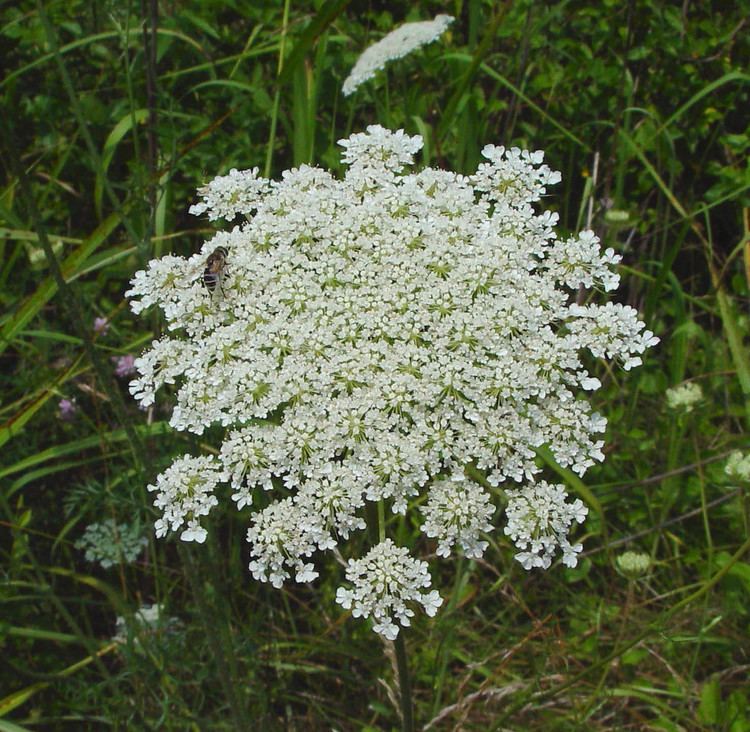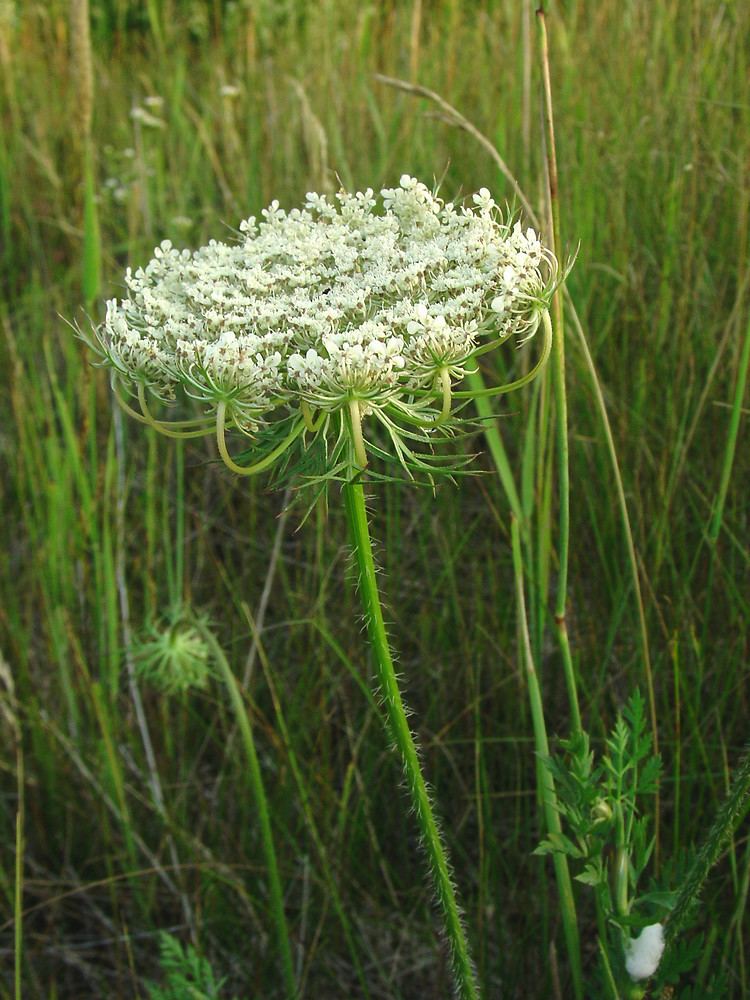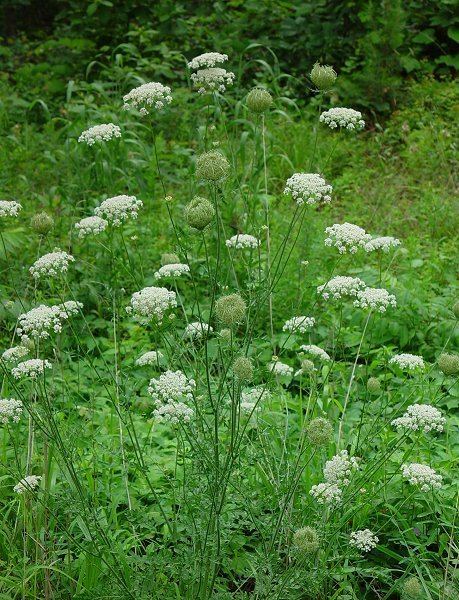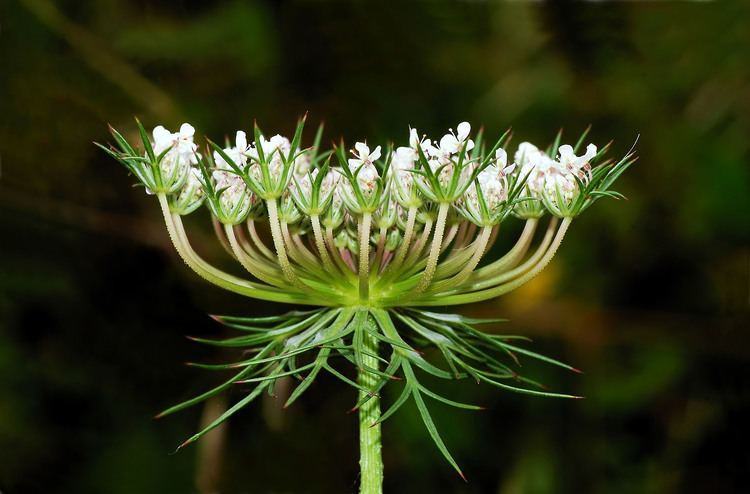Rank Species | Genus Daucus Higher classification Wild carrot | |
 | ||
Lower classifications Carrot, Wild Carrot, Daucus carota su | ||
Edible wild plants wild carrot daucus carota wilderness survival skills and courses
Daucus carota, whose common names include wild carrot, bird's nest, bishop's lace, and Queen Anne's lace (North America), is a flowering plant in the family Apiaceae, native to temperate regions of Europe and southwest Asia, and naturalized to North America and Australia.
Contents
- Edible wild plants wild carrot daucus carota wilderness survival skills and courses
- Description
- Uses
- Beneficial weed
- Queen Annes lace
- Taxonomy
- References

Domesticated carrots are cultivars of a subspecies, Daucus carota subsp. sativus.
Description

The wild carrot is a herbaceous, somewhat variable biennial plant that grows between 30 and 60 cm (1 and 2 ft) tall, and is roughly hairy, with a stiff, solid stem. The leaves are tripinnate, finely divided and lacy, and overall triangular in shape. The flowers are small and dull white, clustered in flat, dense umbels. They may be pink in bud and may have a reddish flower in the centre of the umbel. The lower bracts are three-forked or pinnate, which distinguishes the plant from other white-flowered umbellifers. As the seeds develop, the umbel curls up at the edges, becomes more congested, and develops a concave surface. The fruits are oval and flattened, with short styles and hooked spines. The dried umbels detach from the plant, becoming tumbleweeds. The function of the tiny red flower, coloured by anthocyanin, is to attract insects.

Similar in appearance to the deadly poison hemlock, D. carota is distinguished by a mix of tripinnate leaves, fine hairs on its solid green stems and on its leaves, a root that smells like carrots, and occasionally a single dark red flower in the center of the umbel.
Uses
Like the cultivated carrot, the D. carota root is edible while young, but it quickly becomes too woody to consume.

Extra caution should be used when collecting D. carota because it bears a close resemblance to poison hemlock. In addition, the leaves of the wild carrot can cause phytophotodermatitis, so caution should also be used when handling the plant. It has been used as a method of contraception and an abortifacient for centuries.
If used as a dyestuff, the flowers give a creamy, off-white color.
D. carota, when freshly cut, will draw or change color depending on the color of the water in which it is held. This effect is only visible on the "head" or flower of the plant. Carnations also exhibit this effect. This occurrence is a popular science demonstration in primary grade school.
Beneficial weed
This beneficial weed can be used as a companion plant to crops. Like most members of the umbellifer family, it attracts wasps to its small flowers in its native land; however, where it has been introduced, it attracts very few wasps. This species is also documented to boost tomato plant production when kept nearby, and it can provide a microclimate of cooler, moister air for lettuce, when intercropped with it. However, the states of Iowa, Ohio, Michigan and Washington have listed it as a noxious weed, and it is considered a serious pest in pastures. It persists in the soil seed bank for two to five years.
Queen Anne's lace
D. carota was introduced and naturalized in North America, where it is often known as "Queen Anne's lace". Both Anne, Queen of Great Britain, and her great grandmother, Anne of Denmark, are taken to be the Queen Anne for which the plant is named. It is so called because the flower resembles lace; the red flower in the center is thought to represent a blood droplet where Queen Anne pricked herself with a needle when she was making the lace.
Taxonomy
The carrot was first officially described by Carl Linnaeus in his 1753 work Species Plantarum.
